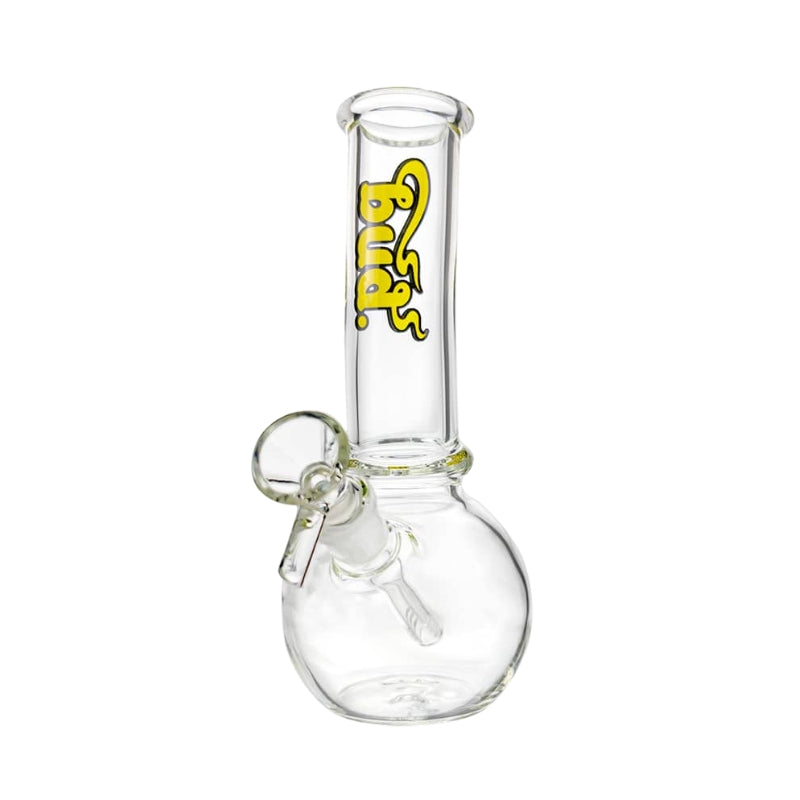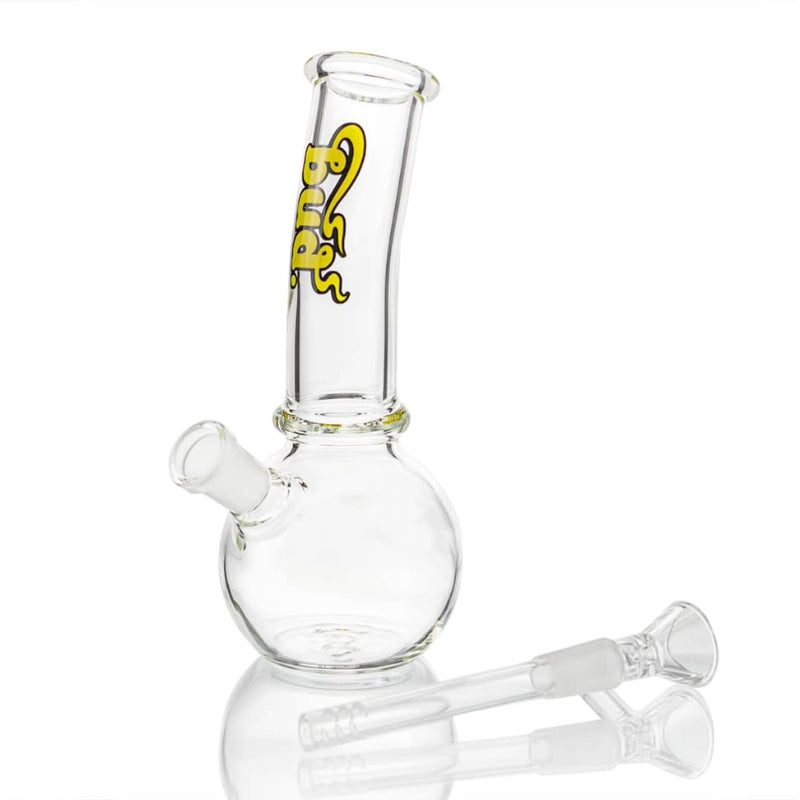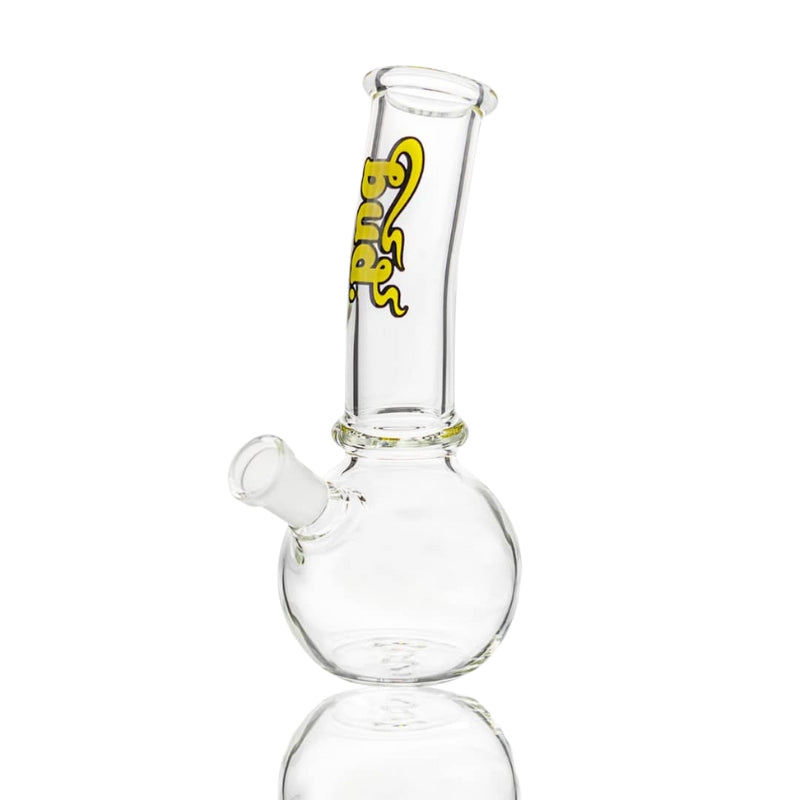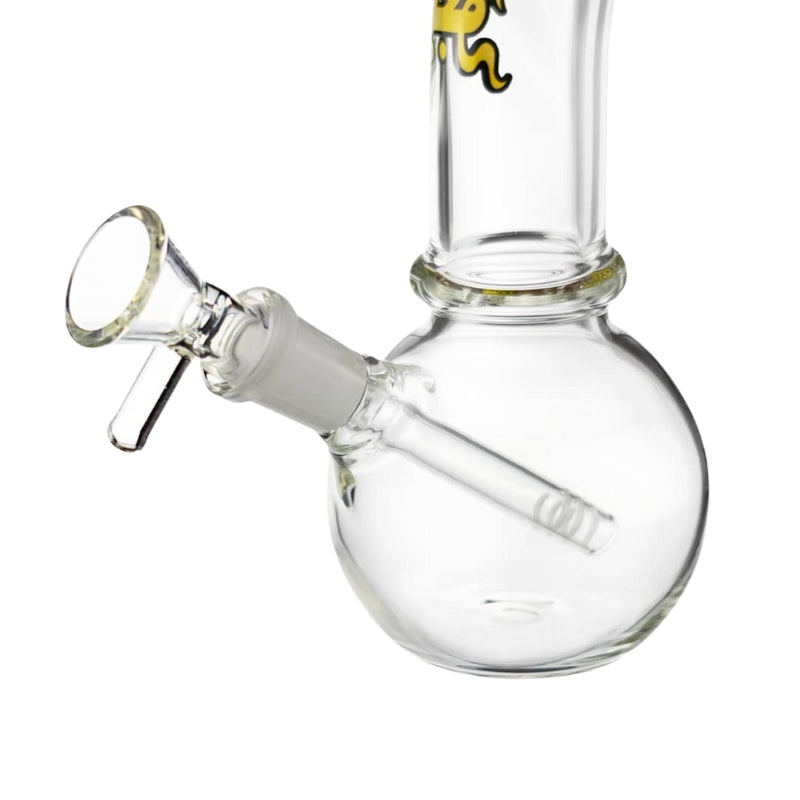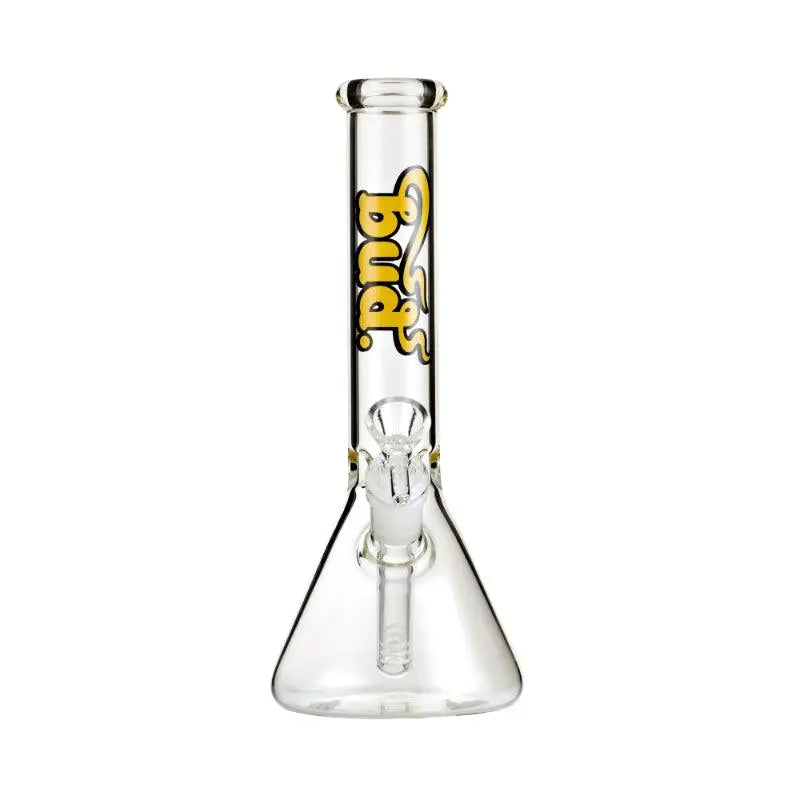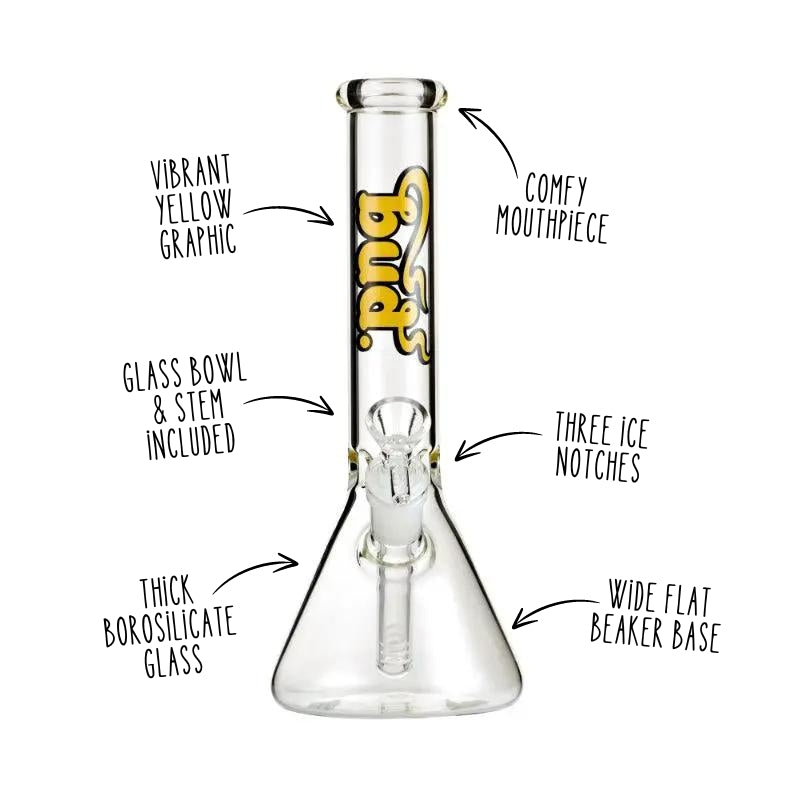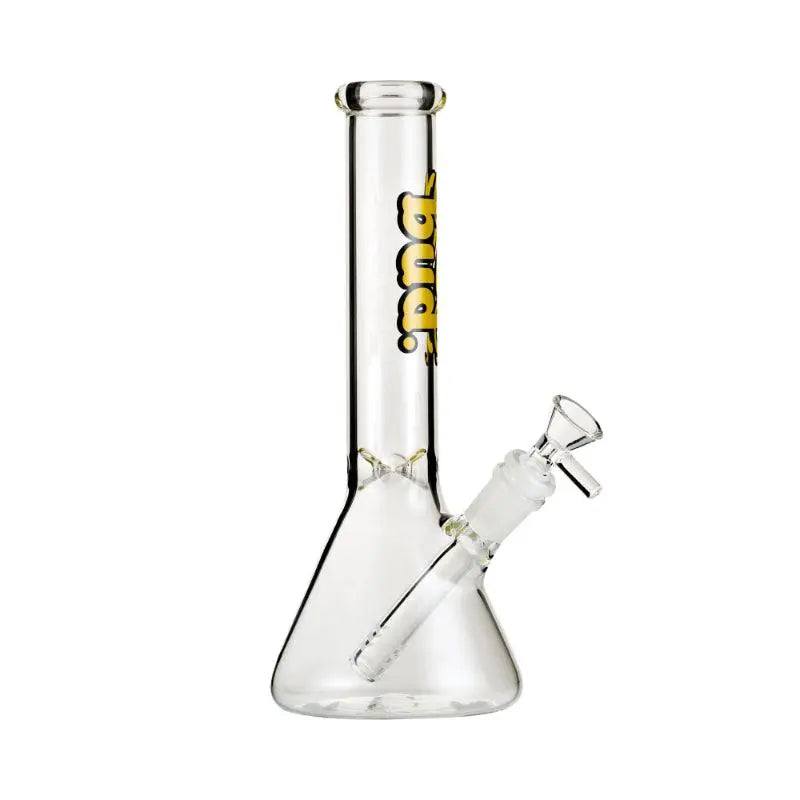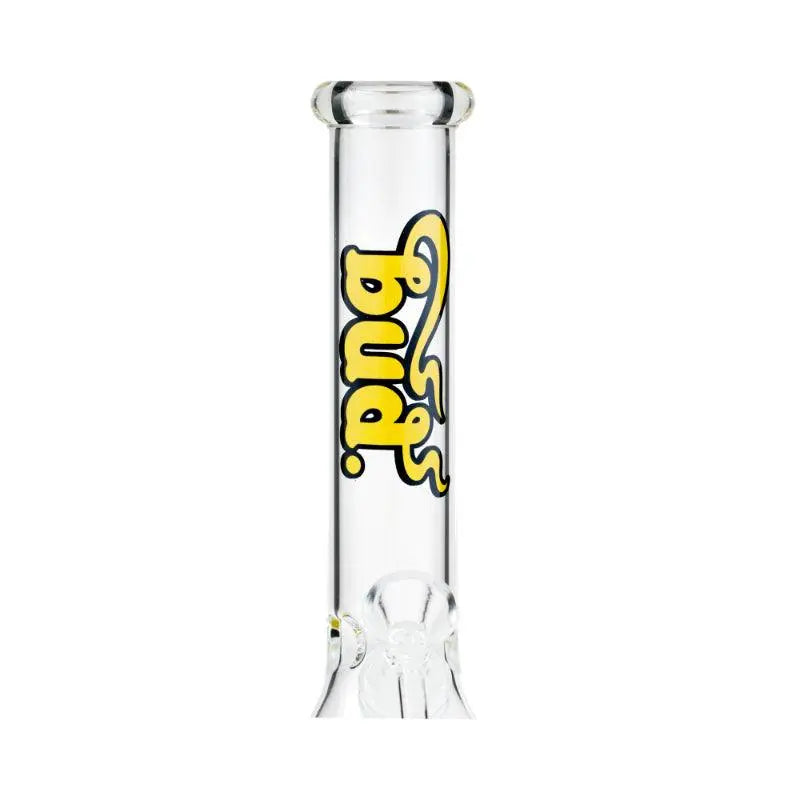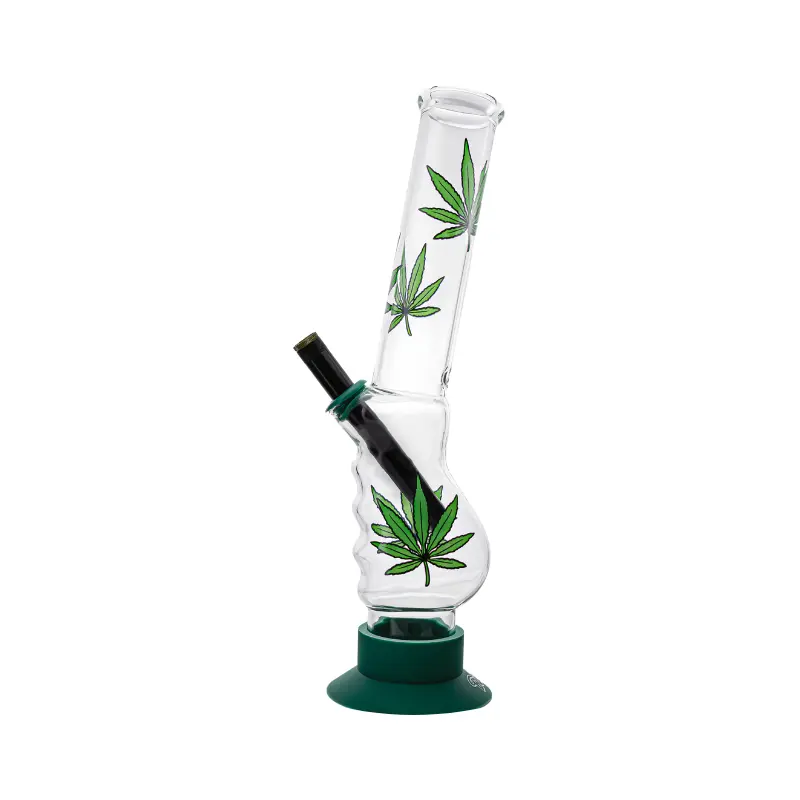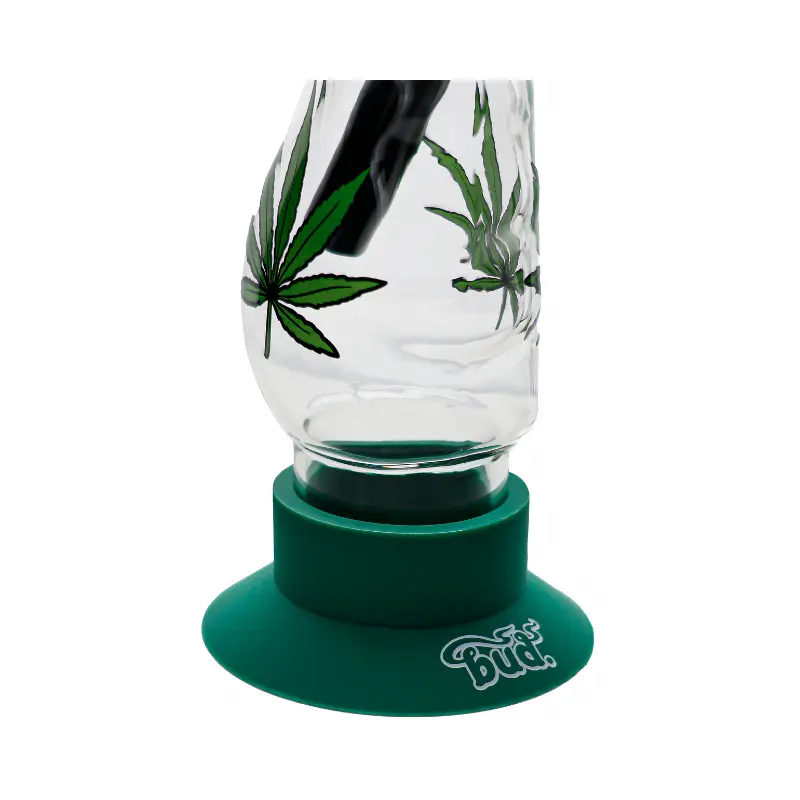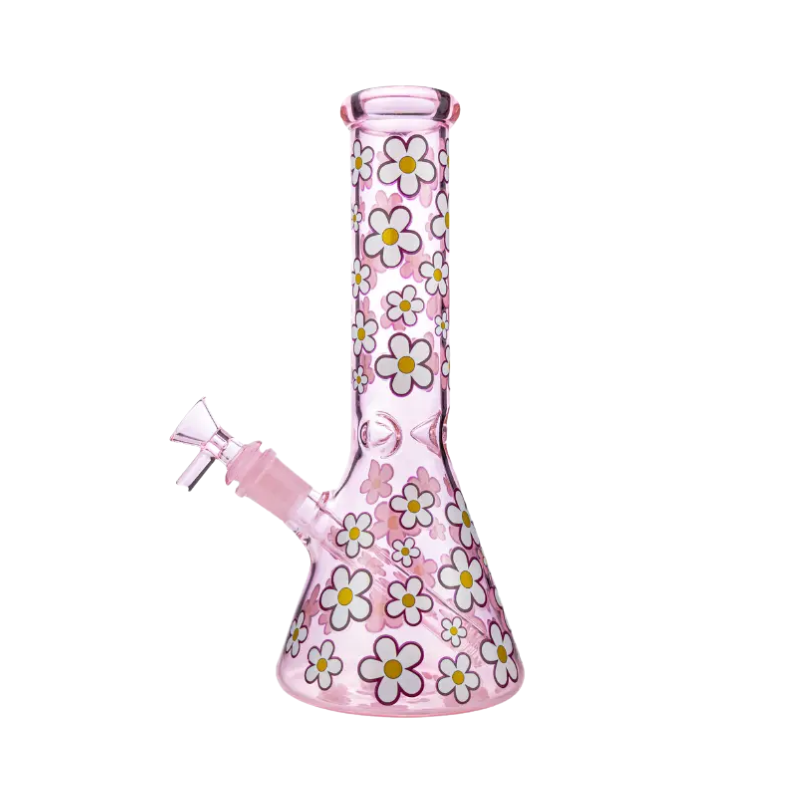
How Does A Bong Work: Breaking Down The Science
Article at a Glance:
- This guide dives deep into the inner workings and scientific principles of bongs. It caters to both beginners and those seeking to expand their knowledge.
- To fully optimise your bong smoking experience and ensure safety, it's crucial to understand how a bong works, make informed choices, personalise your setup, and prioritise maintenance.
- This guide on using bongs highlights their advantages in filtration, cooling, and enhancing flavour compared to other smoking methods.
In this blog post, we will delve into the inner mechanisms of bongs and the fundamental scientific principles that have made them a cherished smoking device for countless cannabis lovers.
Whether you're a bong newbie or simply aiming to enhance your knowledge, this article will furnish you with a thorough overview of everything you need to know about how bongs work.
- The Bong Basics
- Anatomy of a Bong
- The Science Behind Bong Mechanics
- How a Bong Works Step-by-Step
- The Physics of Bong Smoking
- Water’s Crucial Role in Bong Function
- Percolators and Diffusers
- Keeping Your Bong in Top Shape
- Customising Your Bong Experience
- Key Considerations Of Bong Smoking
- Conclusion
- FAQs
The Bong Basics

Understanding how a bong works is crucial if you're looking to enhance your cannabis experience. In this section, you'll discover the essential aspects of bongs, including what they are, their historical significance, and why they've become a preferred choice among cannabis users.
What Is A Bong?
A bong, which you might also know as a water pipe, is an ingenious smoking device that filters and cools smoke through water. When you look at how a bong works, you'll notice it comprises several key components: a water-filled chamber, a bowl for your cannabis, a stem connecting the bowl to the water chamber, and a mouthpiece for inhaling. The primary purpose of this setup is to deliver a smoother, more efficient smoking experience compared to other consumption methods.
History and cultural significance
If you delve into bong history, you'll find evidence of water pipe use dating back 2,400 years in Africa and Central Asia. The word "bong" itself comes from the Thai term "baung", referring to a cylindrical wooden smoking tube. You can trace the evolution of bongs from simple bamboo tubes to today's sophisticated glass apparatuses.
In modern culture, you'll recognise bongs as iconic symbols within the cannabis community. They've gained prominence in popular media, music, and art, often associated with counterculture movements and cannabis advocacy. The significance of bongs extends beyond their practical use, representing a shared ritual and experience among cannabis enthusiasts.
Why bongs are popular among cannabis enthusiasts
Several factors contribute to why you might prefer using a bongs:
1. Smoke filtration
When you use a bong, you'll notice how the water in the chamber effectively cools the smoke and filters out particulates, giving you a smoother inhalation experience. This filtration process can help reduce the harshness you might feel on your throat and lungs.
2. Temperature regulation
As you draw the smoke through the water, you'll experience how it cools significantly, making your inhalation more comfortable. You'll particularly appreciate this cooling effect if you find the heat from other smoking methods uncomfortable.
3. Increased efficiency
You'll discover that bongs allow you to take larger hits compared to other smoking methods, potentially giving you a more intense and immediate effect. If you're an experienced user seeking a stronger impact, you'll find this efficiency quite appealing.
4. Flavour preservation
As you explore how a bong works, you'll notice that water filtration helps preserve the natural flavours of your cannabis by removing harsher smoke elements. This results in a more enjoyable tasting experience for you.
5. Customisation options
You'll find a wide variety of bong designs, materials, and additional features (such as percolators or ice catchers) that allow you to customise your smoking experience to your preferences. As a cannabis connoisseur, you'll value this adaptability.
6. Ritual and social aspects
You'll come to appreciate the process of preparing and using a bong as a ritual that enhances your overall cannabis consumption experience. You'll also find that bongs are excellent for social settings, fostering a sense of community among users.
Anatomy of a Bong
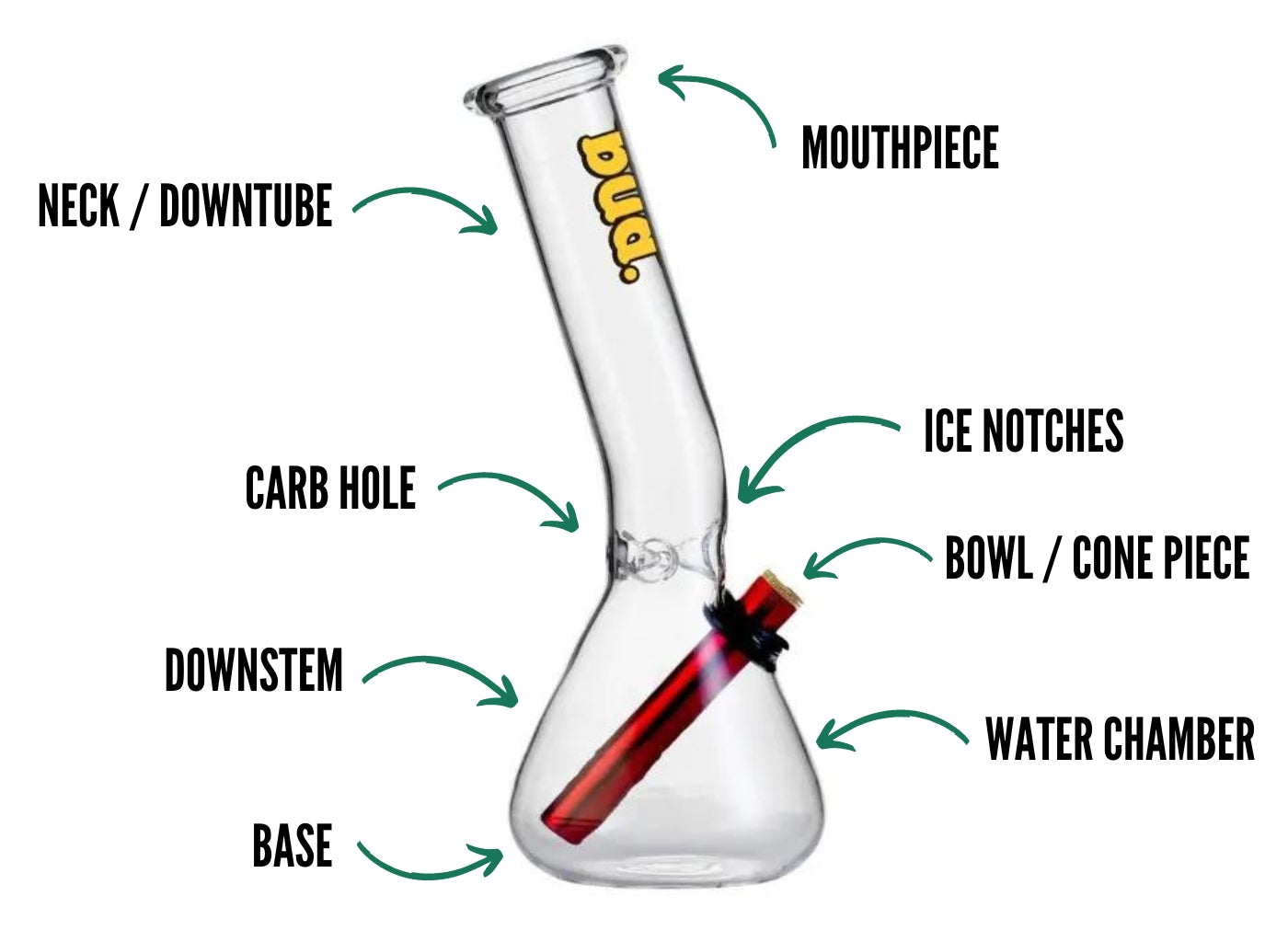
Understanding how a bong works requires you to familiarise yourself with its various components. Each part serves a specific purpose in delivering you a smooth, filtered smoking experience. Let's explore the essential elements that make up your bong's anatomy.
Water Chamber
The water chamber, typically situated at your bong's base, is where the filtration magic happens. This component contains water that acts as a natural filtering system. When you draw smoke through the water, it's cooled and filtered, removing harsh particles and creating a smoother hit. The chamber's size and shape vary, influencing your overall smoking experience.
Bowl or Cone Piece
The bowl, also called a cone piece, is where you'll pack your chosen smoking material. This removable component sits atop your downstem and holds the cannabis or tobacco. When you light it, smoke flows from the bowl through the downstem and into the water chamber. You can choose from bowls of different sizes and materials to suit your preferences.
Downstem
Your downstem is a small but crucial component connecting the bowl to the water chamber. This tube-like piece extends into the water, enabling smoke to travel from your bowl through the water for filtration. You'll find downstems in various lengths and designs, with some featuring additional percolation for enhanced filtering.
Mouthpiece
The mouthpiece is where your filtered smoke completes its journey. Located at the top of your bong's neck, this is where you place your lips to inhale the cooled, filtered smoke. You'll find mouthpiece designs vary, with some featuring flared or tapered shapes for comfort and improved airflow.
Carburetor
Also known as a "carb" or "shotgun," this small hole is typically located on the side of your bong. When you understand how a bong works, you'll see the carb helps you control airflow and clear the chamber of smoke. By covering and uncovering this opening, you can fine-tune your hit for optimal enjoyment.
Downtube or Neck
The downtube, or neck, serves as your bong's main chamber, connecting the water reservoir to the mouthpiece. This is where filtered smoke accumulates before you inhale. The downtube's specific length and shape influence how cool and smooth your hit will be.
Optional Components
While not essential, these additional components can enhance your bong experience:
- Percolators: These internal structures create additional water filtration, giving you smoother hits.
- Ice catchers: Notches in the neck allow you to add ice for extra cooling.
- Ash catchers: These attachments prevent ash and debris from entering your main chamber, keeping your bong cleaner.
The Science Behind Bong Mechanics

Ever wondered how does a bong work to give you that smooth, flavourful smoking experience? As a cannabis enthusiast, you've likely enjoyed using these water pipes, but understanding the science behind their operation can enhance your appreciation even further. Let's explore the fascinating mechanics that make your smoking session so enjoyable.
Combustion and Smoke Production
When you light your cannabis in a bong, you initiate a process called combustion. As your flame makes contact with the dried flower, it rapidly heats the plant material, causing it to break down and release its active compounds. This creates a thick smoke containing cannabinoids, terpenes, and other compounds that give you those unique effects and flavours you love.
The heat from combustion transforms these compounds into a gas that you can inhale. However, this smoke is quite hot and can feel harsh on your throat and lungs. That's where the next stage of your bong's clever design comes into play.
Water Filtration Process
As you draw in the smoke, it travels down the downstem and into the water chamber. Here's where your bong truly demonstrates its brilliance. The water serves as a natural filter, cooling the smoke and removing some of the heavier particles and water-soluble toxins.
When your smoke bubbles through the water, it breaks up into smaller particles. This increased surface area allows for more efficient cooling and filtration. The water catches ash and tar, preventing these unwanted elements from reaching your lungs. Think of it as giving your smoke a refreshing shower before it reaches you!
Cooling and Moisturising Effects
Your bong's popularity stems from its ability to deliver a smoother hit compared to other smoking methods. As the smoke passes through the water, it undergoes significant cooling, making it much more comfortable to inhale.
The water absorbs much of the heat from your smoke, bringing its temperature down considerably. This cooling effect explains why your bong hits feel gentler on your throat and lungs compared to smoking a joint or pipe.
Additionally, the water adds moisture to your smoke. This extra humidity helps reduce irritation in your airways, making for a more pleasant and comfortable experience. It's comparable to the difference between breathing in arid desert air and taking a deep breath in a humid rainforest!
Percolation and Diffusion Explained
If you're looking to elevate your bong experience even further, percolators are the way to go. These additional chambers or structures within your bong are specifically designed to break up and cool the smoke even more effectively.
Percolators function by forcing your smoke through numerous small holes or slits. This process, known as diffusion, breaks your smoke into even smaller bubbles. The more bubbles created, the greater the surface area of smoke that comes into contact with the water, resulting in superior filtration and cooling for your hits.
You'll find various types of percolators available - from basic tree percs to intricate matrix designs. Each offers its own unique method of smoke diffusion, allowing you to customise your smoking experience to suit your preferences. It's like having your personal smoke sommelier perfecting every hit!
How a Bong Works Step-by-Step

Understanding how a bong works can enhance your smoking experience. Let's explore the four key stages of bong operation:
Packing the Bowl
To begin your session, you'll need to prepare the bowl properly:
- Use a quality grinder to break your herbs into medium-sized pieces.
- Place the ground material into the bowl with gentle pressure.
- Ensure even distribution for consistent burning and proper airflow.
Lighting Up and Inhaling
Once you've prepared your bowl, it's time to initiate the smoking process:
- Create an airtight seal with your lips on the mouthpiece.
- Hold your flame source to the bowl's edge.
- Begin a slow, steady inhalation as you light the material.
- Watch as smoke fills the chamber during your inhale.
Smoke Travel Through the Bong
As you draw air in, here's how your bong works to filter smoke:
- Smoke moves from your lit bowl through the downstem.
- It passes into the water chamber for filtration and cooling.
- The smoke creates bubbles as it travels through the water.
- Filtered smoke rises into the main chamber.
Clearing the Chamber
The final phase involves drawing in the accumulated smoke:
- When ready, pull the bowl from the downstem.
- Continue your inhalation to clear the chamber.
- If your piece has a carb hole, uncover it for fresh air intake.
- Take a deep breath to consume all the filtered smoke.
The Physics of Bong Smoking

When you use a bong, the water plays a vital role in enhancing the overall functionality and enjoyment of this popular smoking device. Let's explore how the water contributes to your bong's effectiveness.
Filtration Capabilities
When you draw smoke through a bong, the water acts as a natural filtration system, effectively removing impurities. As the smoke passes through the water, larger particles and water-soluble toxins become trapped, preventing them from reaching your lungs. This filtration process gives you a cleaner, smoother hit that may reduce potential respiratory irritation.
Cooling Properties
One of the primary functions of water in your bong is to cool the smoke before it reaches your lungs. As you draw the hot smoke through the water, heat transfers from the smoke to the liquid, significantly lowering its temperature. This cooling effect makes your inhalation process more comfortable and less harsh on your throat and respiratory system.
Moisturising Effects on Smoke
The water in your bong adds moisture to the smoke, which can benefit your respiratory system. When you inhale dry smoke, it can irritate your throat and lungs, potentially causing coughing and discomfort. The added humidity from the water helps to mitigate these effects, giving you a smoother and more enjoyable smoking experience.
Impact on Overall Smoking Experience
The combination of filtration, cooling, and moisturising effects significantly enhances your overall smoking experience when using a bong. The water's presence allows you to take larger, smoother hits that are less likely to cause coughing or irritation. This improved comfort level often leads to a more enjoyable and satisfying session.
Water’s Crucial Role in Bong Function

When you use a bong, the water plays a vital role in enhancing the overall functionality and enjoyment of this popular smoking device. Let's explore how the water contributes to your bong's effectiveness.
Filtration Capabilities
When you draw smoke through a bong, the water acts as a natural filtration system, effectively removing impurities. As the smoke passes through the water, larger particles and water-soluble toxins become trapped, preventing them from reaching your lungs. This filtration process gives you a cleaner, smoother hit that may reduce potential respiratory irritation.
Cooling Properties
One of the primary functions of water in your bong is to cool the smoke before it reaches your lungs. As you draw the hot smoke through the water, heat transfers from the smoke to the liquid, significantly lowering its temperature. This cooling effect makes your inhalation process more comfortable and less harsh on your throat and respiratory system.
Moisturising Effects on Smoke
The water in your bong adds moisture to the smoke, which can benefit your respiratory system. When you inhale dry smoke, it can irritate your throat and lungs, potentially causing coughing and discomfort. The added humidity from the water helps to mitigate these effects, giving you a smoother and more enjoyable smoking experience.
Impact on Overall Smoking Experience
The combination of filtration, cooling, and moisturising effects significantly enhances your overall smoking experience when using a bong. The water's presence allows you to take larger, smoother hits that are less likely to cause coughing or irritation. This improved comfort level often leads to a more enjoyable and satisfying session.
Percolators and Diffusers
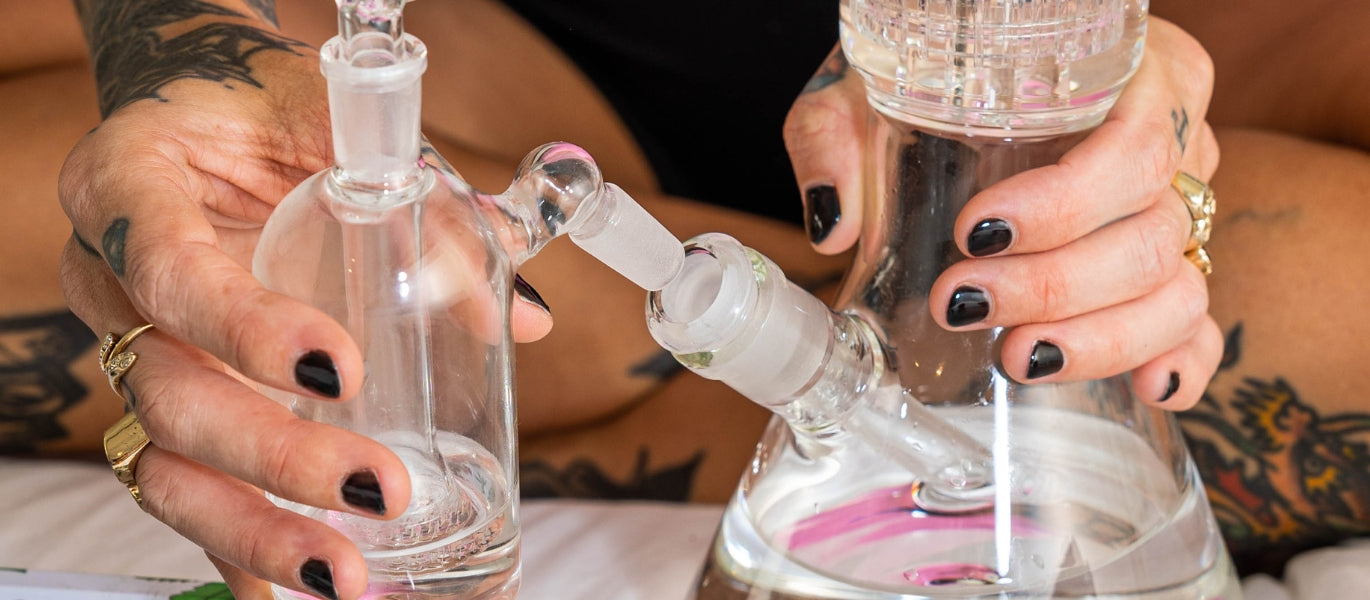
Percolators and diffusers serve as crucial elements in the bong smoking process, delivering superior filtration, cooling, and overall enjoyment. Let's examine these essential features and their impact on your session.
Types of Percolators (Tree, Honeycomb, Showerhead, etc.)
You'll find percolators in various designs, each offering unique benefits:
- Tree Percolators: These feature multiple arms like a tree's branches, creating numerous paths for your smoke to diffuse through.
- Honeycomb Percolators: With a disc containing multiple small holes, these provide extensive smoke diffusion.
- Showerhead Percolators: Similar to their namesake, these disperse your smoke through multiple small holes for efficient filtration.
- Inline Percolators: These horizontal tubes with slits or holes give you straightforward yet effective diffusion.
- Matrix Percolators: By combining vertical and horizontal slits, these create a complex filtration system for your smoothest hits.
How Percolators Improve Filtration and Cooling
Your bong experience is enhanced through these advanced filtration and cooling mechanisms:
- Increased Surface Area: By breaking your smoke into smaller bubbles, percolators increase contact with water.
- Extended Smoke Path: Your smoke travels a longer journey, allowing more time for cooling and filtration.
- Water Interaction: As your smoke passes through the percolator, it interacts thoroughly with water, removing impurities.
- Bubble Formation: The creation of numerous small bubbles enables more efficient heat transfer and filtration.
Impact on Smoke Smoothness and Flavour
When you incorporate percolators in your bong, you'll notice significant improvements:
- Smoother Hits: Through enhanced cooling and filtering, your inhalation becomes noticeably smoother.
- Enhanced Flavour Profile: Efficient filtration removes unwanted particles, letting you taste true flavours.
- Cooler Smoke: The extended water contact and increased surface area deliver cooler smoke, reducing throat irritation.
- Customizable Experience: Different percolator types offer varying diffusion levels, letting you tailor your experience.
Keeping Your Bong in Top Shape

Understanding how a bong works is essential for you as a user, but maintaining it properly is just as crucial for optimal performance. Let's explore the vital aspects of bong care to ensure your smoking experience stays first-rate.
Importance of Regular Cleaning
Regular cleaning is essential for preserving your bong's functionality and the quality of your smoking sessions. A clean bong not only appears better but also functions more efficiently. Here's why it matters to you:
- Prevents resin buildup: Regular cleaning stops sticky resin from accumulating, which can clog your bong and affect how it works.
- Maintains flavour purity: A clean bong ensures you taste only your premium herb, not residue from previous sessions.
- Reduces health risks: Keeping your bong clean minimises harmful bacteria and mould growth, protecting your respiratory health.
Best Practices for Bong Maintenance
To keep your bong in excellent condition, follow these maintenance tips:
- Daily rinse: After each use, give your bong a quick rinse with warm water to remove loose debris.
- Weekly deep clean: Use a specialised bong cleaner or mix isopropyl alcohol and salt for thorough cleaning.
- Change water frequently: Replace your bong water before each session for optimal filtration and taste.
- Handle with care: Always handle your bong gently to avoid cracks or chips, especially during cleaning.
- Use proper storage: Store your bong in a safe, stable place to prevent accidental damage.
How Proper Care Affects Bong Function and Longevity
Maintaining your bong isn't just about appearances; it directly impacts how your bong works and its lifespan:
- Improved filtration: A clean bong filters smoke more effectively, giving you smoother hits and a better overall experience.
- Enhanced percolation: Proper maintenance ensures your percolators function optimally, cooling and diffusing smoke efficiently.
- Prolonged lifespan: Regular care prevents permanent staining and damage, extending your bong's life.
- Consistent performance: A well-maintained bong delivers reliable, high-quality hits every time you use it.
- Better airflow: Keeping your bong clean ensures unrestricted airflow, allowing you to enjoy the full potential of your smoking device.
Customising Your Bong Experience

Understanding how a bong works is essential for creating your perfect smoking session. By experimenting with different elements of your water pipe, you can craft a unique and enjoyable experience tailored to your preferences. Let's explore some ways you can customise your bong for optimal performance and satisfaction.
Experimenting with Water Levels
The water level in your bong is crucial for proper filtration and cooling. Here's how you can fine-tune it:
- Master the basics: Fill your bong with enough water to submerge the downstem by about 1-2 cm.
- Test the draw: Take a gentle pull without lighting the bowl to assess the resistance and bubbling action.
- Make adjustments: Add or remove water until you find your ideal level. More water provides increased filtration but creates more drag.
- Consider your style: Beaker bongs typically need more water than straight tubes due to their wider base.
Remember, optimal water levels vary based on your bong's dimensions and design. Don't hesitate to experiment until you achieve your desired results.
Using Ice for Extra Cooling
If you're seeking an exceptionally smooth hit, adding ice to your bong can transform your experience:
- Find the ice catches: Most bongs feature notches in the neck designed to support ice cubes.
- Add ice with care: Place several ice cubes above the catches, avoiding overfilling.
- Allow settling time: Give the ice a few minutes to cool the bong before your first hit.
- Savour the smoothness: The ice will cool the smoke as it travels through, delivering a gentler, less harsh inhale.
Pro tip: For enhanced cooling, try crushed ice instead of cubes. The greater surface area offers more efficient cooling.
Trying Different Percolators and Attachments
Percolators and attachments can dramatically improve your bong's performance:
- Research percolator styles: From tree percs to honeycomb designs, each offers distinct filtration benefits.
- Consider ash catchers: These additions provide extra filtration and protect your main bong from residue.
- Test various downstems: Upgrading your downstem can enhance smoke diffusion and overall smoothness.
- Explore bowl sizes: Smaller bowls suit personal sessions, while larger ones work better for group smoking.
When choosing percolators or attachments, weigh factors like drag, maintenance requirements, and your smoking preferences. Some users prefer maximum filtration, while others value airflow and flavour preservation.
By customising these aspects of your bong, you'll create a smoking experience that perfectly matches your preferences. Remember, finding your ideal setup requires patience and experimentation.
Key Considerations Of Bong Smoking

Understanding how a bong works requires you to be mindful of essential safety aspects and best practices. This section explores proper handling, mistakes to avoid, and guidelines for responsible use.
Proper Handling and Usage Tips
To ensure you have a safe and enjoyable experience when using your bong, consider these handling and usage tips:
- Clean your bong regularly to prevent harmful bacteria and residue from building up.
- Use fresh, clean water each time you use your bong for optimal filtration and taste.
- Handle your bong with care, particularly if it's made of glass, to avoid breakage and injuries.
- Keep your bong in a secure spot, away from high-traffic areas and out of children's and pets' reach.
- Always place your bong on a stable, flat surface to prevent tipping and spillage.
- Don't share mouthpieces to minimise the spread of germs and infections.
Avoiding Common Mistakes
To get the most from your bong and reduce potential risks, watch out for these common errors:
- Adding too much water to the chamber, which can result in water splashing into your mouth.
- Using excessive force when inserting or removing the bowl, risking damage to your bong.
- Failing to clean your bong regularly, leading to harmful bacteria and residue accumulation.
- Disregarding cracks or chips in your bong that could compromise its safety.
- Using unsuitable materials as makeshift bong parts, potentially exposing yourself to harmful substances.
- Not securing all components properly, causing air leaks and reduced effectiveness.
Responsible Consumption Guidelines
To ensure you have a safe and responsible experience with your bong, follow these guidelines:
- Know your personal limits and begin with small amounts to assess your tolerance.
- Don't mix cannabis with alcohol or other substances, as effects can intensify unpredictably.
- Never drive vehicles or operate heavy machinery after using your bong.
- Be mindful of your environment and use your bong in a safe, legal setting.
- Show consideration for others who may not want exposure to second-hand smoke.
- Keep water and snacks nearby to combat dry mouth and hunger.
- Seek immediate medical attention if you experience any adverse effects.
Conclusion

Understanding how a bong works is essential for enhancing your smoking experience. Let's review the key aspects you've learned:
- Filtration and Cooling: Your bong's water acts as a natural filter, removing harmful particles whilst cooling the smoke for a smoother inhale.
- Percolation: Advanced bongs utilise percolators to further break down smoke bubbles, maximising filtration and cooling efficiency.
- Customisation: From ice notches to ash catchers, various components allow you to personalise your bong to suit your preferences.
- Proper Technique: Mastering the correct inhalation method ensures you get optimal results from your smoking session.
You should feel encouraged to explore different bong styles and accessories. Each type, from beakers to percolators, delivers its own unique experience. Don't hesitate to experiment with various water levels or add ice to discover your ideal setup. Remember, understanding how a bong works is crucial - each component contributes to the overall function.
As you venture deeper into the world of bongs, you'll develop a greater appreciation for the science behind this time-honoured smoking method. The physics of pressure differentials, heat transfer, and filtration all work together to deliver your smooth, flavourful hit. By understanding these principles, you can make informed decisions about your smoking preferences and potentially enhance your overall enjoyment.
In conclusion, knowing how a bong works empowers you to optimise your smoking experience. Whether you're a seasoned enthusiast or new to bong use, there's always room to refine your technique and explore new possibilities. As you continue your journey, remember that responsible use and regular maintenance of your bong are essential for long-lasting enjoyment. Happy smoking!
FAQs
Wondering how a bong works? We've gathered answers to your top ten questions about bong functionality. Let's explore the fascinating science behind these popular smoking devices and understand their inner workings.
Q. What's the basic principle behind how a bong works?
Your bong operates by filtering and cooling smoke through water. When you ignite your herbs and inhale, the smoke travels down through the downstem, bubbles through the water, and fills the chamber. This process effectively cools your smoke and removes impurities, giving you a smoother hit.
Q. Why does a bong use water?
The water in your bong serves multiple functions. It cools your smoke, making it gentler on your throat and lungs. It also acts as a natural filter, capturing heavier particles and water-soluble compounds. This filtration process helps reduce some of the harsh effects you might experience while smoking.
Q. How does percolation affect bong performance?
When you use a bong, percolation refers to smoke diffusion through water. If your bong has percolators, they break the smoke into tinier bubbles, increasing contact with water. This enhanced percolation delivers more effective cooling and filtration, ensuring you get a smoother experience.
Q. What role does the downstem play in a bong?
Your downstem is vital to how a bong works. It channels smoke from your bowl into the water chamber, ensuring proper filtration. The length and design of your downstem can significantly impact smoke diffusion and overall performance.
Q. How does the size of a bong impact its function?
The size of your bong influences several aspects of its performance. Larger bongs typically offer more smoke volume and additional filtration, potentially giving you smoother hits. However, they require more lung power to clear. Smaller bongs are more portable and easier to use but may provide less filtration.
Q. What's the purpose of ice in some bongs?
If your bong features ice pinches or notches, they're designed to hold ice cubes. The ice further cools your smoke after it passes through the water, delivering an even smoother and more refreshing hit. This additional cooling can make your smoking experience more enjoyable.
Q. How do diffusers enhance bong performance?
The diffusers in your bong, often found at the downstem's end, break smoke into smaller bubbles. This increased surface area contact between smoke and water enhances filtration and cooling. Diffusers can dramatically improve the smoothness of your hits.
Q. What's the function of a carb hole in a bong?
If your bong has a carb hole, typically found in smaller bongs or bubblers, it allows you to clear the chamber of smoke quickly. By covering and uncovering the carb, you can control your airflow and smoke density, customising your hit to your preference.
Q. How does bong water get dirty, and why should it be changed?
When you use your bong, the water accumulates particles, resins, and water-soluble compounds from your smoke. Over time, this makes your water dirty and reduces its filtration effectiveness. To maintain optimal performance and ensure the best possible experience, you should change your water regularly. Fresh water not only ensures proper filtration but also maintains flavour quality and prevents any harmful bacteria or mould from developing.
Q. Can the shape of your bong affect its functionality?
Yes, your bong's shape significantly influences how it works. For instance, if you choose a beaker-bottom bong, you'll get more stability and water volume, potentially providing enhanced filtration. Straight-tube bongs offer a more direct path for your smoke, which you might prefer. The best shape for you ultimately depends on your personal preference and smoking style.

